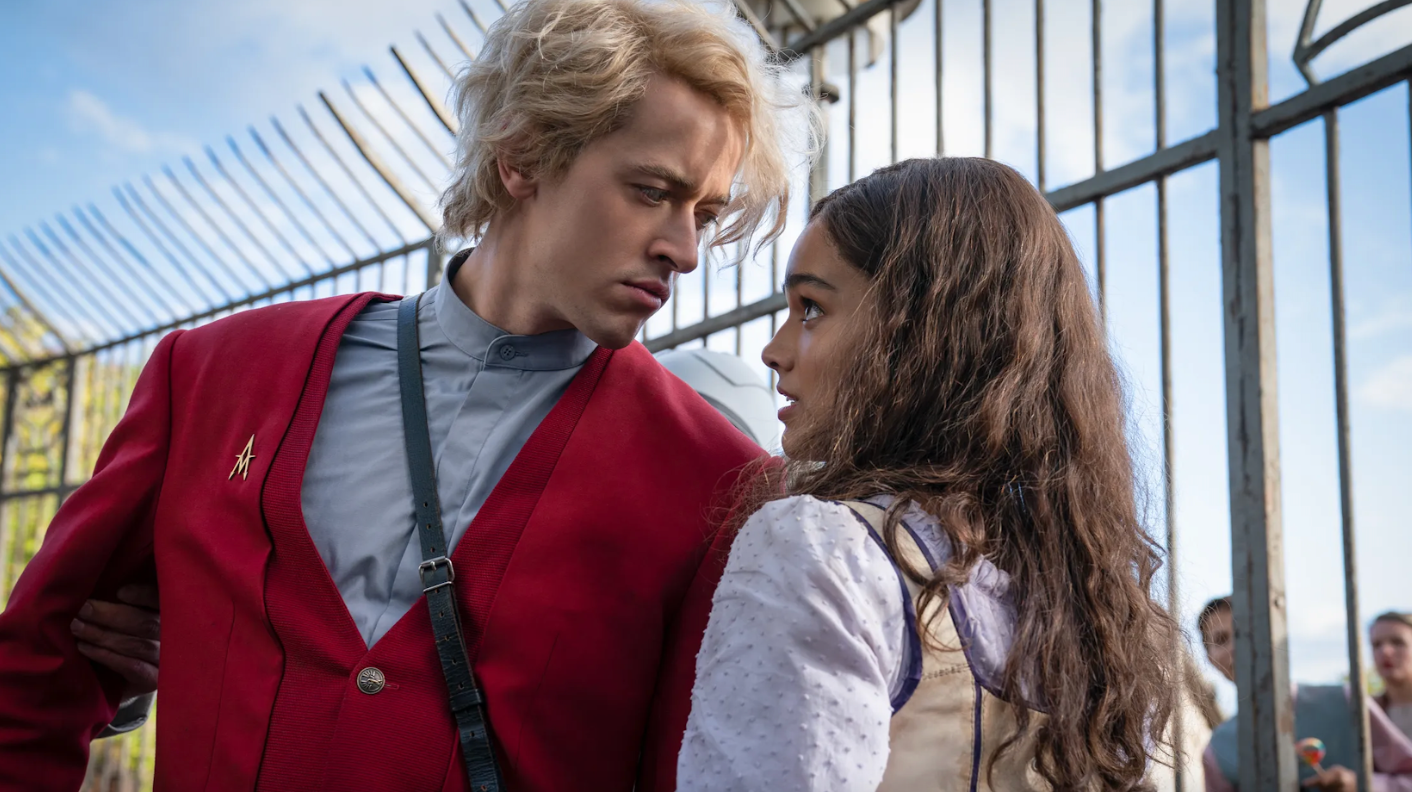Based on the 2020 novel by Suzanne Collins, “The Ballad of Songbirds and Snakes” offers a unique version of the Hunger Games, as the film delves deeper into Panem’s rich history.
**Warning: the following content contains spoilers. **

“The Ballad of Songbirds and Snakes” movie adapted cover art
“The Ballad of Songbirds and Snakes” follows the thrilling story of Lucy Gray Baird and Coriolanus Snow. Serving as a prequel to the original Hunger Games series by Suzanne Collins, the movie is set 63 years before the first film, and covers the events of the 10th annual Hunger Games and Coriolanus Snow’s rise to power in Panem.
“The Ballad of Songbirds and Snakes” explains how Snow popularized the games with the help of Lucy Gray Baird. Turning them into the vicious, brutal spectacular we know. In the original trilogy, Coriolanius Snow serves as the President of Panem, and plays a crucial role in the existence of the Hunger Games.
The film comprises many parallels to the original trilogy. We see the introduction of the mockingjay to the series, a symbol used by the revolution in the later films. Lucy Gray Baird, a young girl from District 12 is reaped to represent her district in the Hunger Games, much like that of Katniss Everdeen from the original set of films. This resemblance is seen, as Snow rose, and fell, in power in part because of two seemingly unrelated girls from District 12.
“While her story isn’t well known, Lucy Gray lives on in a significant way through her music,” Collins stated in an interview. Musical parallels continue throughout the series, the ballads composed by Lucy Gray have a deep Appalachian tone, reflecting the location and culture of District 12 as seen in the later movies. The most apparent parallel however is found in her composition of “The Hanging Tree”, a song performed by Katniss Everdeen (played by Jennifer Lawrence) in the later films.
Despite these similarities, we see a different Panem than in the original movies. This Panem is clearly a post civil-war country, one that is heavily divided between the Capitol and the districts, with visible tensions between the two.
In the start of the film, Capitol leaders are faced with a challenge: the existence of the Hunger Games is under scrutiny as they fail to capture audiences attention and make a profit. Dr. Volumnia Gaul and Casca Highbottom (portrayed by Viola Davia and Peter Dinklage, respectively) task students of the Capitol Academy with elevating the Games. Giving them the role of mentors over the tributes.
Tom Blyth’s portrayal of Snow allows viewers to see the symbolic link between ambition and insanity, as his actions to move forward often push him to the brink of madness. With the absence of Snow’s inner-monologue as seen in the book, it is difficult to grasp his motivation. Snow’s complex relationships with Lucy Gray Baird and his childhood friend Sejanus Plinth showcase his humanity in the beginning, slowly turning into insanity as he ultimately plays a role in the fate of both characters.
“Coriolanius, he’s just such a complex character. And seeing him go from a young man who is troubled fighting for his family to a young man who is still troubled but has a goal and an aim… he becomes the kind of dictator that we know him to be,” Blyth states in an interview, explaining how Snow developed over time to become the villain he is later on in the series.
Lucy Gray Baird, portrayed by actress Rachel Zegler, is a singer hailing from District 12. Her theatrical performances lead her to popularity in the Capitol, moving Snow higher in power as he served as her mentor. Baird’s songs reflect her experiences both in District 12 and the Capitol, ballads that show a sense of resilience and rebellion despite the conditions she has been forced into.
Snow’s ambition and conflicted emotions for Baird push him to disregard the rules of the games, doing anything in his power to allow Lucy Gray to win. His punishment for this is being sent out to the districts as a peacekeeper, where he reunites with her after the games.
Snow soon realizes that the revolution that overtook Panem nearly 10 years ago continues in the districts on a smaller scale. Sejanus Plinth, a classmate of Snow’s, plays a role in this movement. A turning point in Snow’s sanity, Snow turns Plinth in to capital authority for his actions. Not before hatching an escape plan with Baird after his role in the murder that led to a manhunt throughout District 12.
Lucy Gray’s fate is left open-ended in the movie, leaving spectators to question what truly happened to her and what role she played in the later books. After leaving with Snow, the two had a falling out, but the end of Baird’s story is left a mystery. With the erasure of the 10th Hunger Games, she is seemingly forgotten by the districts and the capital. Her only legacy being her ballads, sung by revolutionaries in the later films.
“When it comes to Lucy Gray, I like to think she’s free. I hope one day I’ll get to hear that from Suzanne though,” Zegler believes Baird’s fate to be exactly what the character needed, a liberating ending for a girl who had been simply surviving her entire life.
Snow ties up all loose ends regarding his crimes in District 12, and is able to return to the capital to work for Dr. Gaul. Haunted by the ghost of Lucy Gray Baird, Snow rises in power until he becomes the brutal dictator of Panem as seen in the later films, renouncing any ounce of humanity he may have possessed in the beginning.
An exhilarating edition to the Hunger Games, “The Ballad of Songbirds and Snakes” offers a deeper look into Panem’s history. Unique analogies between films leaves the viewer with an intimate understanding. However one question remains: What happened to Lucy Gray Baird?

